How Far Apart to Plant Apple Trees: Maximizing Your Harvest
- February 8, 2024
- 0 comment
Discover the key to maximizing apple harvest with expert tips on tree spacing. Perfect for orchardists aiming for health and high yields. When it comes to cultivating apple trees, one of the most critical decisions an orchardist makes is determining the proper spacing between trees. The space allotted to each tree can significantly impact the orchard’s overall health, ease of maintenance, and, most importantly, the yield of delicious apples.
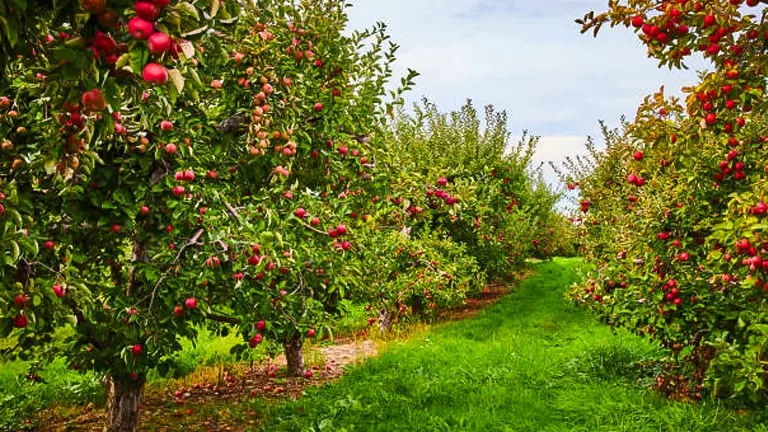
This article delves into the art and science of apple tree spacing, offering you actionable advice backed by research. Whether you’re planning a small backyard orchard or managing acres of apple trees, understanding the nuances of tree spacing will be key to maximizing your harvest.
Table of Contents
- The Science of Apple Tree Growth
- Comprehensive Factors Influencing Apple Tree Spacing
- Strategies for Maximizing Harvest through Spacing
- In-Depth Planting and Maintenance Practices
- Avoiding and Correcting Common Spacing Mistakes
- Conclusion
- Call to Action
- FAQs
The Science of Apple Tree Growth
Growth Patterns
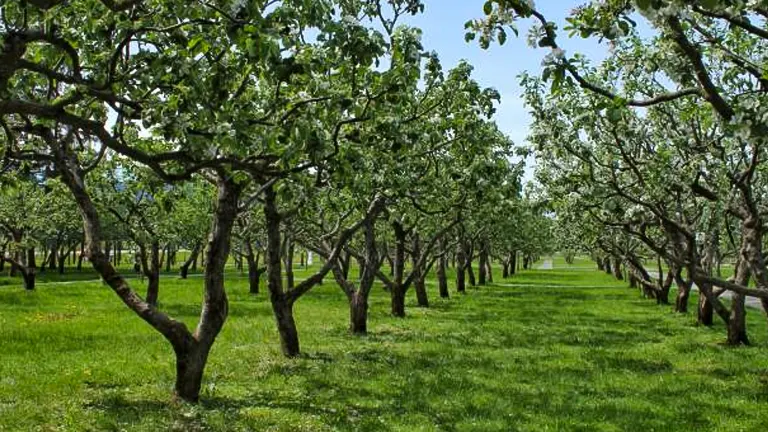
Apple trees, like all fruit trees, have specific growth habits that are crucial to understand for optimal orchard planning. An apple tree’s life cycle begins as a sapling, but over the years, it undergoes significant transformations. Its root system expands far beyond the visible canopy, sometimes stretching out to twice the diameter of the tree’s branches. Meanwhile, the canopy itself grows denser and wider, eventually reaching a mature spread that can vary dramatically depending on the tree variety.
These growth patterns are not just academic knowledge; they have practical implications for how apple trees are spaced. For instance, the expansive root system of apple trees means they compete for nutrients and water in the soil. Crowded trees may struggle to find sufficient resources, leading to stunted growth and reduced fruit production. Conversely, a well-spaced orchard allows each tree ample room to thrive, both above and below ground.
Detailed Growth Patterns and Requirements of Apple Trees
| Aspect | Description | Specific Numbers | Scientific Basis |
|---|---|---|---|
| Root System Depth | Depth to which apple tree roots can extend to access water and nutrients. | 30-100 cm (12-39 inches) for most of the fibrous roots; deeper roots can reach down to 3 meters (about 9.8 feet) in well-drained soils. | Root depth is influenced by soil structure, texture, and water availability. Deep roots help in drought resistance. |
| Root System Spread | Lateral extension of the root system beyond the tree’s canopy. | Can extend 1.5 to 2 times beyond the drip line of the canopy. | Root spread is critical for nutrient uptake and is influenced by soil density, moisture, and nutrient gradients. |
| Canopy Spread | Horizontal reach of the tree’s branches, impacting light absorption and fruit production. | Dwarf varieties: 3-4 meters (10-13 feet); Semi-dwarf: 4-6 meters (13-20 feet); Standard: 6-9 meters (20-30 feet). | Canopy development is influenced by tree genetics, pruning practices, and environmental factors. |
| Annual Growth Rate | Rate at which an apple tree grows in height and width annually. | Dwarf: 30-60 cm (12-24 inches); Semi-dwarf: 60-90 cm (24-35 inches); Standard: 90-150 cm (35-59 inches). | Growth rates are influenced by variety, soil fertility, water availability, and pruning. |
| Time to Maturity | Age at which apple trees begin to reach full size and maximum fruit production. | Dwarf: 3-5 years; Semi-dwarf: 5-7 years; Standard: 7-10 years. | Maturation time is dependent on variety and is critical for planning orchard turnover and maximizing production cycles. |
| Fruit Bearing Age | Age at which apple trees start producing fruit. | Dwarf: 2-3 years; Semi-dwarf: 4-5 years; Standard: 6-10 years. | Fruit bearing age is influenced by tree variety, rootstock, and environmental conditions. |
| Optimal pH for Growth | Soil pH level at which apple trees thrive, influencing nutrient availability and root development. | 6.0 to 7.0 | Soil pH affects nutrient solubility and availability, impacting tree health and productivity. |
| Chill Hours Requirement | Number of hours below 7.2°C (45°F) needed for apple trees to break dormancy and ensure fruit set. | 500-1000 hours, varying significantly among varieties. | Chill hours are essential for endodormancy break and flowering. Varietal adaptation to climate influences this requirement. |
The study of apple tree growth highlights the crucial need for precise orchard management, focusing on root system characteristics, canopy management, and environmental requirements like soil pH and chill hours. Understanding these aspects is essential for healthy growth and maximizing fruit yield, underscoring the importance of informed decision-making and diligent care in apple cultivation.
Impact on Orchard Design
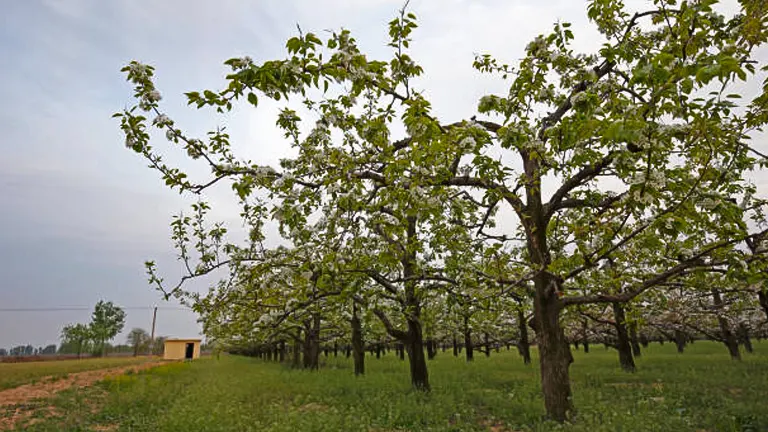
Understanding the natural expansion of apple trees helps us appreciate why spacing is so pivotal. An orchard’s design must account for the mature size of its trees, ensuring they have enough room to grow without overcrowding. This foresight prevents a multitude of problems, including inadequate air circulation and sunlight exposure, which can lead to disease and poor fruit quality.
The design should also consider the orchard’s operational aspects, such as access for pruning, thinning, and harvesting. Adequate spacing between rows and individual trees facilitates these activities, making orchard management more efficient and less labor-intensive.
Comprehensive Factors Influencing Apple Tree Spacing
When planning an apple orchard, understanding the factors that dictate the optimal spacing between trees is crucial. These factors are not only about accommodating the physical growth of the trees but also about ensuring the orchard operates efficiently and productively over the years.
Tree Varieties
Apple trees are broadly classified into three categories based on their size: dwarf, semi-dwarf, and standard. Each category has its own spacing requirements to optimize health and fruit production:
- Dwarf trees typically require 8-10 feet between trees and 12-15 feet between rows. These smaller trees are easier to manage and harvest but may need staking or trellising for support.
- Semi-dwarf trees need about 12-15 feet between trees and 15-20 feet between rows. They offer a balance between manageable tree size and more substantial fruit production.
- Standard trees, the largest variety, require 18-25 feet between trees and 20-30 feet between rows. Though they take longer to mature, they can produce more fruit per tree and live longer.
Pollination Dynamics
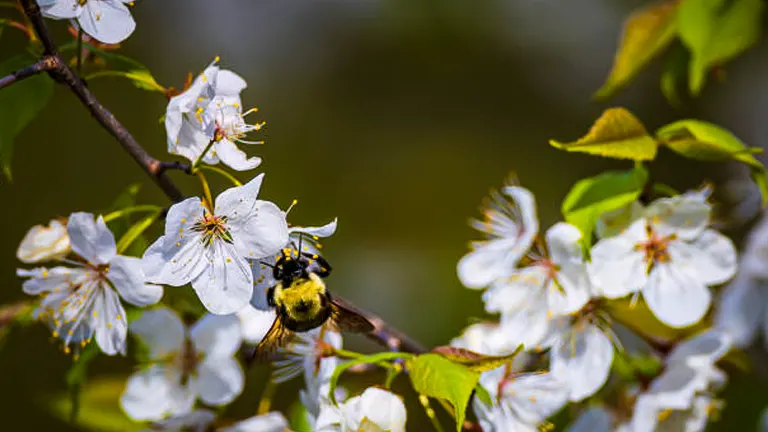
Effective pollination is essential for fruit set in apple trees, which is significantly influenced by how the trees are spaced. Most apple varieties require cross-pollination from a different variety to produce fruit. The strategic placement of pollinator trees within an orchard can enhance pollination efficiency. Ideally, pollinator varieties should be planted no more than 50 feet apart to ensure bees and other pollinators can easily transfer pollen between trees.
A Guide to Pollination Dynamics and Strategic Tree Spacing
| Aspect | Details | Impact on Pollination | Scientific Insights and Quantitative Data |
|---|---|---|---|
| Cross-Pollination Efficiency | Most apple varieties exhibit self-incompatibility, requiring pollen from another cultivar for successful pollination. | Critical for fruit set; without cross-pollination, many trees produce limited or no fruit. | Cross-pollinated flowers have a higher fruit set rate, often exceeding 60%, compared to self-pollinated flowers which can be significantly lower, sometimes less than 5%. |
| Pollinator Distance | Optimal distance between different apple varieties for effective cross-pollination. | Maximizes pollen transfer by pollinators, affecting fruit quality and yield. | Placing pollinator trees within 30-50 feet (9-15 meters) of each other can increase pollination efficiency, with bee visitation rates decreasing as distance increases. |
| Bloom Synchronicity | Degree of overlap in flowering periods between different apple varieties used for cross-pollination. | Ensures availability of compatible pollen when the stigma is receptive. | Synchronicity within a 5-7 day window maximizes cross-pollination opportunities, with overlap percentages directly correlating to increased fruit set rates. |
| Pollinator Varieties | Number and types of pollinator varieties planted to ensure effective cross-pollination. | Diversifies pollen sources, enhancing pollination success. | Incorporating at least 2-3 different compatible pollinator varieties within an orchard can significantly enhance cross-pollination rates and fruit set. |
| Pollinator-to-Tree Ratio | Ratio of pollinator trees to main crop trees within an orchard. | Balances pollen source and fruit production trees, optimizing orchard yield. | Optimal ratios range from 1:8 to 1:12 (pollinator:crop), with adjustments based on variety specifics and orchard design, aiming for uniform pollen distribution and accessibility. |
| Bee Visit Frequency | Average number of bee visits required for effective pollination of an apple flower. | Directly influences the likelihood of successful pollination and fruit development. | It is estimated that an apple flower needs to be visited by bees 6-10 times to achieve adequate pollination, highlighting the importance of bee activity for fruit set. |
| Floral Morphology Impact | Influence of apple flower structure on pollination efficiency, including stigma receptivity and pollen viability. | Affects the ease and success rate of pollen transfer and fertilization. | Stigma receptivity peaks within the first 3 days of bloom, while pollen viability can vary, requiring timing alignment for optimal cross-pollination. |
| Pollinator Habitat | Presence and quality of bee habitat near the orchard, including nesting sites and availability of diverse nectar and pollen sources throughout the season. | Enhances pollinator population and activity within the orchard, impacting pollination success. | Research shows that orchards adjacent to natural habitats have higher bee diversity and abundance, leading to improved pollination outcomes compared to those without nearby natural habitats. |
Understanding how to get the most out of apple tree pollination boils down to a few key points: the right mix of apple varieties, placing them close enough for bees to work their magic effectively, and making sure they bloom around the same time. It’s about creating a welcoming environment for bees, with plenty of variety and nearby natural spaces, which can really boost your orchard’s productivity. This approach, grounded in solid research, not only promises a better harvest but also makes your orchard a healthier, more vibrant place. It’s clear that paying attention to these details can lead to big wins for apple growers.
Soil and Topography
The nature of the soil and the topography of the land play significant roles in determining tree spacing:
- Soil Quality: Well-draining soil with good fertility can support closer spacing by facilitating better root growth and nutrient uptake. Conversely, in poorer soils, wider spacing may be necessary to reduce competition for resources.
- Topography: Sloped land can affect water drainage and sunlight exposure. Trees on slopes may need to be spaced differently to prevent erosion and ensure each tree receives adequate sunlight.
Microclimate Creation
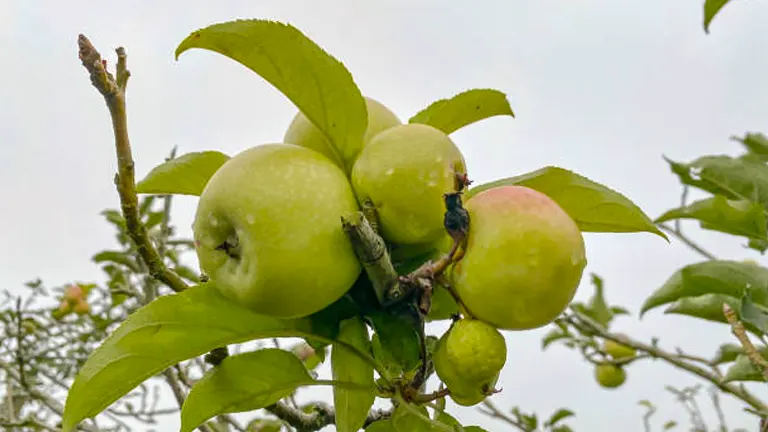
The arrangement of apple trees within an orchard can create microclimates that either benefit or hinder tree growth and fruit production. Proper spacing allows for the free movement of air, reducing the risk of fungal diseases and ensuring each tree receives its share of sunlight and moisture. Additionally, the orientation of rows in relation to the prevailing winds and sunlight can further influence the microclimate around each tree.
Strategies for Maximizing Harvest Through Spacing
Adopting a strategic approach to apple tree spacing can significantly impact the orchard’s yield and operational efficiency. This section explores advanced planting strategies, row arrangement techniques, and thinning methods designed to optimize harvest.
1. Precision in High-Density Planting
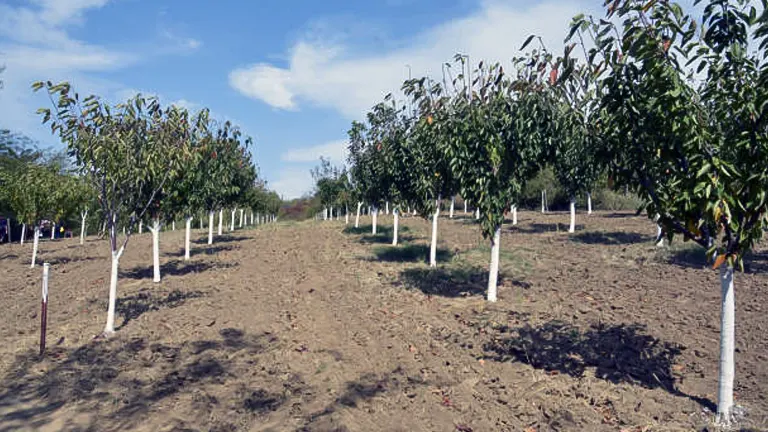
High-density planting represents a shift towards more trees per acre, exploiting the benefits of dwarf and semi-dwarf varieties. This method can dramatically increase yield potential but requires precision in several key areas:
- Spacing Recommendations: For high-density orchards, dwarf apple trees can be spaced as closely as 3-4 feet apart within rows, with row spacings of 10-12 feet. Semi-dwarf varieties might be spaced 5-6 feet apart with similar row spacings. These configurations allow for the maximization of space while ensuring adequate sunlight and air circulation.
- Rootstock Selection: Choosing the right rootstock is critical in high-density settings, as it influences the tree’s vigor, size, and the efficiency of space usage. Rootstocks like M9 for dwarf varieties are popular for their ability to support high-density planting by controlling tree size.
- Vertical Growth Management: Utilizing trellises or support systems enables vertical growth management, essential for optimizing light exposure and facilitating maintenance tasks in a high-density orchard.
2. Row Arrangement Optimization
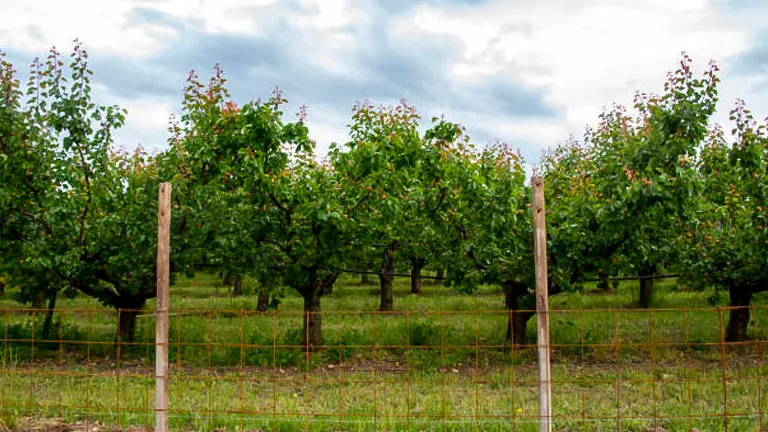
In addition to orientation, the arrangement of rows can be optimized further by considering:
- Contour Planting: For orchards on sloped terrain, planting along the contours can help minimize soil erosion and optimize water usage, crucial for maintaining tree health and productivity.
- Variable Spacing: Adjusting the spacing between rows based on the topography and microclimatic conditions of the orchard site can improve light availability and air flow, which are vital for disease prevention and fruit development.
3. Enhanced Thinning Techniques
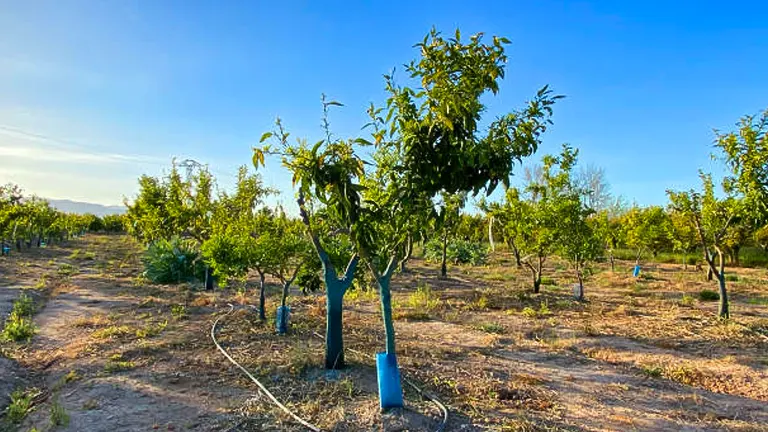
Advanced thinning techniques go beyond merely reducing fruit load; they also aim to improve fruit quality and tree resilience:
- Blossom Thinning: This involves removing excess blossoms before they develop into fruit, allowing the tree to focus its energy on fewer, higher-quality fruits. Blossom thinning can be done manually or chemically, depending on the orchard’s size and management philosophy.
- Selective Fruit Thinning: After fruit set, selective thinning of developing fruits can further refine the harvest, focusing on spacing fruits evenly along the branches to promote uniform ripening and size. This is particularly important in high-density orchards where light penetration and air circulation are critical.
4. Integrating Technology in Spacing Strategies

Leveraging technology can offer significant advantages in planning and maintaining optimal spacing:
- GIS Mapping and Drone Technology: These tools can help in precise orchard mapping, identifying variations in topography, and monitoring tree health, which aids in making informed decisions about tree spacing and arrangement.
- Precision Agriculture Tools: Soil moisture sensors, climate monitoring stations, and other precision agriculture technologies can guide irrigation, fertilization, and pest management practices, ensuring that the spatial arrangement of the orchard supports optimal tree growth and fruit production.
In-Depth Planting and Maintenance Practices
Precision Planting
Planting apple trees with future growth and spacing in mind begins with selecting the right site and preparing it accordingly. Here’s how to do it step by step:
- Site Selection: Choose a site with good air circulation, full sunlight, and well-draining soil. Avoid low areas where frost may settle or where water pools.
- Soil Preparation: Conduct a soil test to determine pH and nutrient levels. Adjust soil pH to between 6.0 and 7.0 by adding lime or sulfur as needed. Incorporate organic matter to improve soil structure and fertility.
- Hole Spacing and Digging: Based on the tree variety and the orchard plan, mark the spots for each tree, adhering to the recommended spacing guidelines. Dig holes that are twice as wide as the root ball but just as deep, to encourage roots to spread horizontally rather than digging down.
Comprehensive Maintenance
After planting, ongoing maintenance is key to the success of the orchard. This includes:
- Pruning: Annual pruning during the dormant season shapes the tree, improves sunlight penetration, and encourages the growth of fruiting branches. For high-density orchards, summer pruning may also be necessary to control tree size and enhance air circulation.
- Watering: Young trees need regular watering to establish roots, while mature trees require deep, infrequent watering to encourage deep root growth. The specific needs depend on soil moisture levels and weather conditions.
- Fertilization: Apply nutrients based on soil test results and tree growth rates. Over-fertilization can lead to excessive vegetative growth at the expense of fruit production.
- Pest and Disease Management: Implement an integrated pest management (IPM) approach, monitoring for pests and diseases and using cultural, biological, and chemical controls as necessary.
Avoiding and Correcting Common Spacing Mistakes
Even with careful planning, mistakes in spacing and orchard layout can occur. Here’s how to address some common issues:
Overcrowding: If trees are planted too closely, they may compete for light, water, and nutrients, leading to poor growth and reduced yield.
- Solution: Thinning out trees or moving some to a new location can help alleviate overcrowding. This might involve significant effort but can dramatically improve orchard health and productivity.
Incorrect Spacing for Variety: Sometimes, the chosen spacing does not suit the specific growth habits of the planted variety.
- Solution: Regular pruning and training can help manage tree size and shape to some extent. For significant issues, grafting onto a more suitable rootstock or replanting may be necessary.
Poor Air Circulation and Sunlight Penetration: These issues can lead to increased disease pressure and uneven fruit maturation.
- Solution: Pruning to open up the canopy and thinning fruit to improve air and light distribution can mitigate these problems.
Conclusion
Optimal spacing of apple trees is a foundational aspect of orchard design that directly impacts the health of the trees and the quantity and quality of the harvest. By understanding and applying the principles of tree growth, variety requirements, and effective orchard management, growers can ensure their orchards are productive, sustainable, and manageable.
FAQs
- What is the optimal spacing for dwarf apple trees to ensure maximum yield?
Dwarf apple trees should ideally be spaced 8-10 feet apart. This spacing allows sufficient sunlight and air circulation for each tree, promoting healthy growth and maximizing fruit production. - Can the spacing between apple trees affect their pollination rates?
Yes, spacing can significantly impact pollination. Trees that are too far apart may not cross-pollinate efficiently. Keeping pollinator trees within 50 feet of each other is recommended to enhance pollination success and fruit set. - How does tree spacing influence pest management in an apple orchard?
Proper spacing helps in managing pests by improving air circulation and reducing humidity around the trees, which are conditions that pests and diseases favor. It also allows easier access for pest control measures. - Is there a difference in spacing requirements for organic vs. conventional apple orchards?
While the basic principles of spacing for optimal growth and yield apply to both, organic orchards might opt for slightly wider spacing to enhance air flow and reduce disease pressure without relying heavily on synthetic fungicides. - How do soil conditions affect the recommended spacing for apple trees?
Soil conditions that promote vigorous growth, such as high fertility and good drainage, might require wider spacing to prevent overcrowding and competition for nutrients. In less ideal soils, closer spacing might be tolerable since tree growth is naturally limited. - Can the spacing between apple trees be adjusted after planting?
Adjusting spacing after planting is challenging and can stress the trees. It’s best to plan and implement the correct spacing from the outset. However, selective pruning or removing some trees altogether can help manage spacing issues in an established orchard. - How does the orientation of apple tree rows (north-south vs. east-west) affect spacing considerations?
Row orientation impacts how sunlight and shadow affect the trees throughout the day. North-south oriented rows typically receive more uniform sunlight, potentially allowing for slightly closer spacing without sacrificing light access, compared to east-west rows. - What role does thinning play in maximizing harvest, and how is it related to tree spacing?
Thinning, the removal of excess fruit or blossoms, is crucial for preventing branches from becoming overburdened and breaking. Proper spacing facilitates better thinning practices by allowing easier access to trees and improving the distribution of sunlight and nutrients, leading to larger, healthier fruits.
With the right spacing, your apple orchard can thrive, producing abundant and healthy fruits. By focusing on the details shared, you’re setting the stage for success. Happy planting, and here’s to a harvest that’s as rewarding as it is plentiful!

Benjamin Brooks
Forestry AuthorGreetings! I'm Benjamin Brooks, and my journey over the past 15 years has revolved around the fascinating realms of content creation, expertise in snow clearing, and the intricate world of lumberjacking and landscaping. What began as a simple curiosity about the natural world and heavy machinery has evolved into a passionate profession where my love for crafting words intertwines seamlessly with my lumberjacking and garden skills.


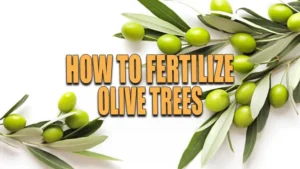










Leave your comment